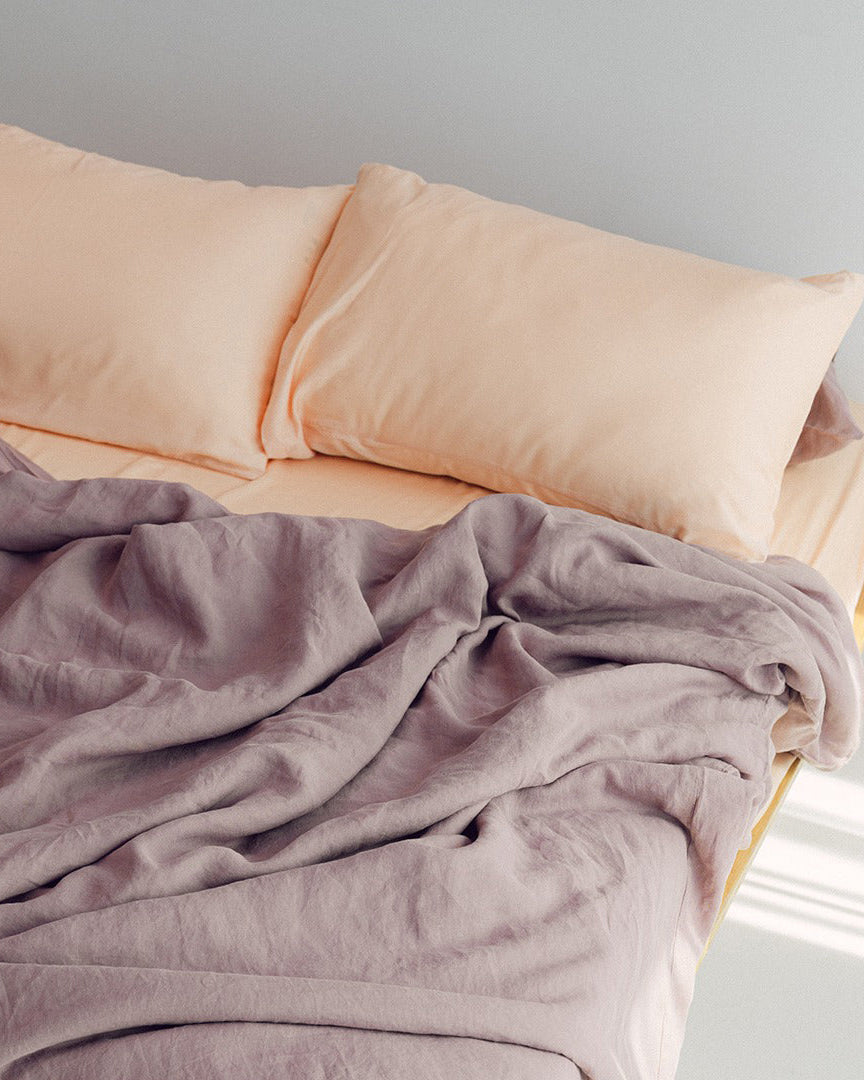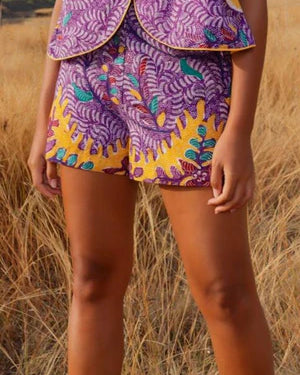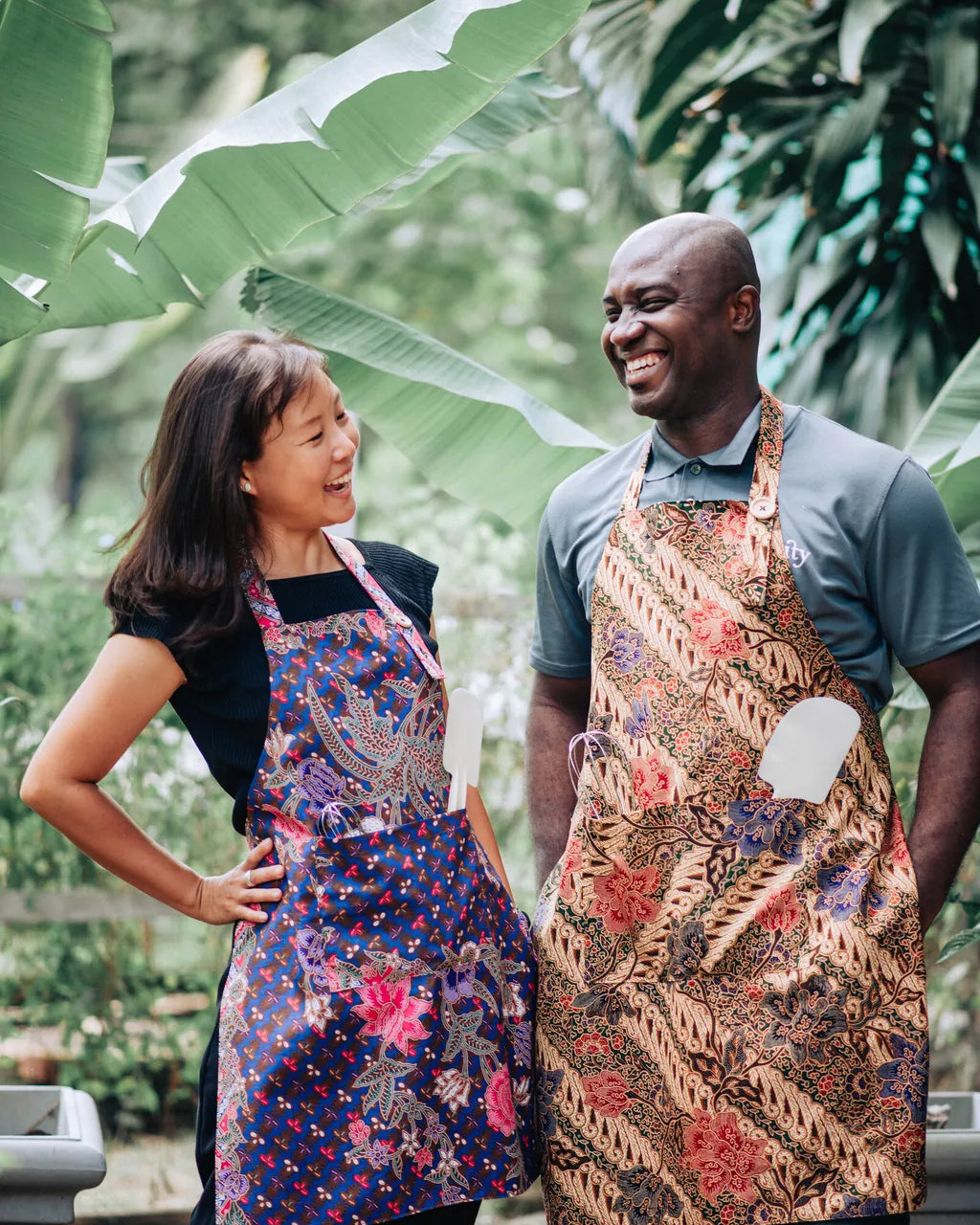Three Things We Learned about Batik Making from Haniza Hisham, Founder of Nysakapas

Haniza Hisham is a city girl from Kuala Lumpur who fell in love with the traditional way of life after moving to a small village on the east coast of Peninsular Malaysia.
In Kampung Serada, a place she now calls home, batik is not for special occasions, but for the everyday life.
With a background in architecture and design, the rich batik culture in the village piqued Haniza’s interest.
She set up Nysakapas in 2016 with the intention to introduce the kampung lifestyle through batik to those who, like her, might have an affinity for it.
However, it was when Haniza decided to make those batik from scratch herself that she has truly begun to build a deeper connection with the craft.
Here are the three things we learned from her chat with Harith Green Carpenter and Najmia Z. in The Green Factor Unplugged about her journey learning the art of batik.

A screenshot from The Green Factor Unplugged interview
1. Not all handcrafted batiks are made from natural dyes
When Haniza started her batik business, she had zero knowledge about batik making.
In addition, viewed as an outsider to the village, information was even harder to come by.
But perhaps, it was a blessing of hers to be able to discover this art form with a clean slate, not influenced by the bias of familiarity.
In the batik industry, there are the bigger players with factories and machines who can print batiks in large quantities.
And there are the smaller artisans like herself who handcraft batiks from home.
But most of them are making batiks with an array of chemical dyes, some more detrimental to the artisans’ health and the environment than the others.
She knows this because she had dabbled in it for a few years herself.
Haniza experimented with both natural and chemical dyes when trying to master the art of batik making.
She found the former hard to understand while the latter easy to implement.
Perhaps, it is due to ease and convenience that chemical dyes are widely adopted.
But for Haniza, between the fast, easy but ultimately harmful method and the slower, laborious but sustainable way, she has chosen the latter.

Photo from Nysakapas’s Instagram
2. Beyond the intricate patterns of batik, there is a natural rhythm of life
Making natural dyed batik requires the artisans to recognise the circular nature of the environment.
The first things Haniza learned about natural dyes, under the tutelage of Pok Aziz Awang, were not colours extraction methods, but to engage in philosophical reflection on the existence of natural pigments.
Learning the rules of nature and understanding how its colours transform from one state to another are all part of the lessons.
Haniza has also learned to be more attuned to the changing of the seasons.
As she expressed, sunshine is batik artisans’ best friend, and rain is the teacher. In her case, rain teaches her patience as well as resourcefulness in making a livelihood and meeting customer demands while maintaining the commitment to sustainability.

Photo from Nysakapas’s Instagram
3. Batik making is more than just a skill set; it is a way of life, an artistic expression and a spiritual experience
Before a piece of natural dyed batik reaches its eventual owner, it would have gone through a meticulous process of craftsmanship.
Each piece is a representation of the artisans’ personal and collective values and intentions, from thoughts to actions to results.
Working with four young artisans at Nysakapas, Haniza observes that each artisan’s unique disposition is often reflected in the art.
That is because they are not machines; each artisan has his or her own rhythm and a way to express their soul through the work.
From the moment Haniza took the first step to learn more about the natural way of making batik, she has gained more than just a skill set.
She now finds herself on a journey that continually invites her to explore her purpose in life.
Among many things, Haniza has set her sight on reintroducing natural dyes into the batik making industry in Malaysia.
Haniza is now both a student and a teacher of the art of sustainable batik making.

Photo from Nysakapas’s Instagram
Explore Nysakapas’ natural dyed batik collections.
Listen to the full interview on Youtube or Spotify.
















